Home Assistant is a versatile open-source platform that allows users to control and automate various smart devices in their homes.
In this blog post, we will explore how to integrate IVSEC IP Cameras connected through an IVSEC Network Video Recorder (NVR) into Home Assistant using the RTSP and Snapshot streams. By following these steps, you can conveniently monitor and manage your IVSEC cameras within the Home Assistant ecosystem.
Step 1: Enable ONVIF in the IVSEC NVR and Set Credentials: Before proceeding with the integration, ensure that the ONVIF protocol is enabled in your IVSEC NVR. To do this:
- Obtain the IP address of your IVSEC NVR.
- Open a web browser and enter the NVR's IP address in the address bar.
- Log in to the NVR using the administrator credentials.
- Navigate to the network settings tab or a similar section in the NVR's interface.
- Locate the platform access settings and enable ONVIF support.
- Set a username and password for the ONVIF integration. Make sure to note down these credentials as you will need them later.

Step 2: Add IVSEC IP Cameras via NVR Integration to Home Assistant: To integrate your IVSEC IP Cameras connected through the IVSEC NVR into Home Assistant using the RTSP and Snapshot streams, proceed as follows:
- Access the Home Assistant web interface.
- Click on "Configuration" in the sidebar menu and select "Integrations."
- Search for "Generic Camera" and click on the result to add the integration.
- Enter a name for the integration and provide the NVR's IP address, username, and password set in Step 1.
- Note the snapshot stream URL, which typically follows the format: http://NVRIPADDRESS:80/onvif/snapshot?channel=1 (Replace '1' with the camera channel number in the NVR, e.g., 1, 2, 3, 4).
- Similarly, find the RTSP configuration settings and enable RTSP streaming.
- Note the RTSP stream URL, usually in the format: rtsp://NVRIPADDRESS:80/rtsp/streaming?channel=01&subtype=1 (Replace '01' with the camera channel number in the NVR, e.g., 01, 02, 03, 04).

Step 3: Troubleshooting Tips (If Camera Stream is Not Displayed): If the camera stream is not displayed in Home Assistant, you can try the following troubleshooting tips:
-
Verify Video Codec Type: Some cameras may require a specific video codec type. In Home Assistant, navigate to the camera's entity settings and check the video codec settings. If the camera stream is not showing, try changing the video codec type to H.264 or another compatible format.
-
Reduce Camera Bitrate: If your system is overloaded or the network bandwidth is limited, reducing the camera's bitrate may help improve streaming performance. In the camera's entity settings in Home Assistant, look for bitrate or video settings and lower the value to reduce the data transmitted.
By applying these troubleshooting tips, you can overcome potential issues and ensure a smooth camera stream within Home Assistant.

Step 4: Access and Utilize the IVSEC IP Cameras in Home Assistant: Once the integration is complete, you can access and utilize your IVSEC IP Cameras connected through the IVSEC NVR within the Home Assistant ecosystem. The camera feeds will be available as separate entities in Home Assistant's interface, allowing you to view them in real-time and capture snapshots. You can also create automations, configure motion detection, or incorporate the camera feeds into Home Assistant dashboards.
Conclusion: Integrating IVSEC IP Cameras connected through an IVSEC NVR into Home Assistant using the RTSP and Snapshot streams provides a centralized and seamless approach to monitor your home's security. By following the steps outlined in this blog post, you can conveniently connect and manage your IVSEC cameras within the Home Assistant ecosystem. Enhance your smart home security system and enjoy the benefits of automation and control.

